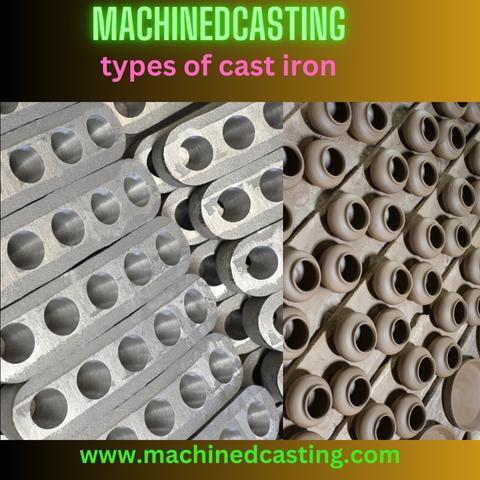Cast iron has a rich history in both industrial and culinary applications. This versatile material comes in various forms, each tailored for specific uses. In this comprehensive guide, we will delve into the different types of cast iron, their characteristics, and where they are commonly employed.
Part 1: Gray Cast Iron
-
What is Gray Cast Iron? Gray cast iron is the most common and widely recognized form of cast iron. It gets its name from the gray appearance of its fracture surface when it is broken. It's made by melting iron with a high carbon content and pouring it into molds.
-
Properties and Uses: Gray cast iron has excellent heat retention and even heating properties, making it perfect for cookware like skillets and Dutch ovens. It is also used in engine blocks, pipes, and industrial machinery.
Part 2: White Cast Iron
-
What is White Cast Iron? White cast iron is produced by rapidly cooling the molten metal, which inhibits the formation of graphite. This results in a hard, brittle material with a white, crystalline fracture surface.
-
Properties and Uses: Due to its extreme hardness, white cast iron is primarily used in applications where wear resistance is crucial. Examples include ball mills, grinding media, and certain types of heavy machinery components.
Part 3: Ductile Cast Iron (Nodular Cast Iron)
-
What is Ductile Cast Iron? Ductile cast iron, also known as nodular cast iron, is created by adding small amounts of magnesium to molten iron. This causes the formation of spherical graphite nodules in the structure, which improves its ductility.
-
Properties and Uses: Ductile cast iron combines the strength and durability of cast iron with improved flexibility. It's commonly used in pipes, automotive components, gears, and parts requiring both strength and resilience.
Part 4: Malleable Cast Iron
-
What is Malleable Cast Iron? Malleable cast iron is created by annealing white cast iron. This process involves heating the material and holding it at a specific temperature until the iron grains form irregularly shaped nodules.
-
Properties and Uses: Malleable cast iron has good ductility and can be easily machined and welded. It's often used in applications like plumbing fittings, electrical conduits, and various decorative castings.
Part 5: Alloyed Cast Iron
-
What is Alloyed Cast Iron? Alloyed cast iron is created by adding specific alloying elements, such as chromium, nickel, or molybdenum, to the molten iron. This enhances the material's properties for specific applications.
-
Properties and Uses: Alloyed cast iron is used in various applications where specific characteristics are needed. For example, high-chromium cast iron is used for abrasion-resistant parts, while nickel-chromium cast iron is utilized in high-temperature environments.
Part 6: Application of Cast Iron in Culinary and Cookware
-
Cast Iron Cookware: Cast iron's excellent heat retention and even heating properties make it ideal for cookware like skillets, griddles, and Dutch ovens. Seasoning cast iron cookware with oil gives it a natural non-stick surface.
-
Outdoor Cooking: Cast iron is popular for outdoor cooking, as it can withstand high temperatures and is often used in camping and open-fire cooking.
Conclusion: Cast iron comes in various forms, each with its unique properties and applications. Understanding these different types of cast iron can help you make informed choices when it comes to selecting the right material for your specific needs, whether it's in industrial machinery, piping, automotive components, or your kitchen. Cast iron's durability and versatility make it a valuable material across a wide range of applications.


